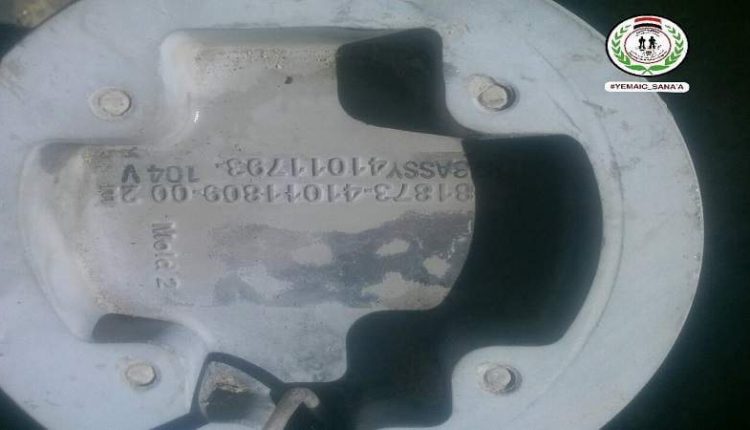US-Saudi Aggression Used Internationally Prohibited GBU-31 Bomb in Sana’a
The Executive Center for Mine Action revealed the type of bomb used by the US-Saudi aggression in targeting the waste gathering area in Bani Matar district, Sana’a Governorate, last week.
In a statement, the center clarified that the US-made bomb is a GBU-31type, a joint direct attack munitions known as JDAM.
It pointed out that the bomb has the ability to penetrate up to four meters into reinforced concrete, and its temperature when detonating ranges from 2800 to 3500 degrees Celsius.
It added that the JDAM is capable of carrying high explosives weighing up to 23 kg made of AFX-757 and with a total weight of 129 kg.
The statement stated that the bomb is characterized by the ability to instantly kill and divide into small lethal parts, and it forces the infection to amputate the affected limbs because of its penetration of bones and tissues, causing deep burns, laceration of tissues, veins and arteries, and the occurrence of large bloody bleeding in the affected organs.
It pointed out that the legal bases on which the international prohibition of these bombs and missiles used in depleted uranium is based on the fact that they are toxic weapons with indiscriminate effects. Their use does not constitute a military necessity, in addition to the fact that they cause extensive and long lasting damage to the environment.
The Executive Center for Mine Action enumerated the health and environmental damages and effects of using JDAM bombs, indicating that their use leads to a wide spread of cancerous diseases, congenital malformations and fatal births, affects the immune and nervous systems, and leads to genetic abnormalities.
The negative effects of these weapons on humans, plants and animals appear in the medium and long term, destroying and harming the environment, polluting the soil and air, poisoning groundwater and eliminating normal life in the affected areas for millions of years.
The statement reviewed the most important international reports and investigations issued by organizations and research centers on the negative effects of the use of deadly bombs. Among these reports is “New Weapon Committee” by the United Nations expert, Jean François Fechino. It was about the concentration of minerals in the soil that was conducted by a group of Italian independent scientists and doctors (NWRC) in the Gaza Strip, in addition to the report of the new weapons committee on the poisoning of the soil of the Gaza Strip.
The US-Saudi aggression targeted the waste gathering area of the Executive Center for Mine Action in Bani Matar district on February 18, with the aim of concealing evidence related to war crimes against Yemen.
The Executive Center for Mine Action pointed out that the area of gathering remnants of the US-Saudi aggression was known and had been visited by the United Nations.
Bombs Aggression Yemen

